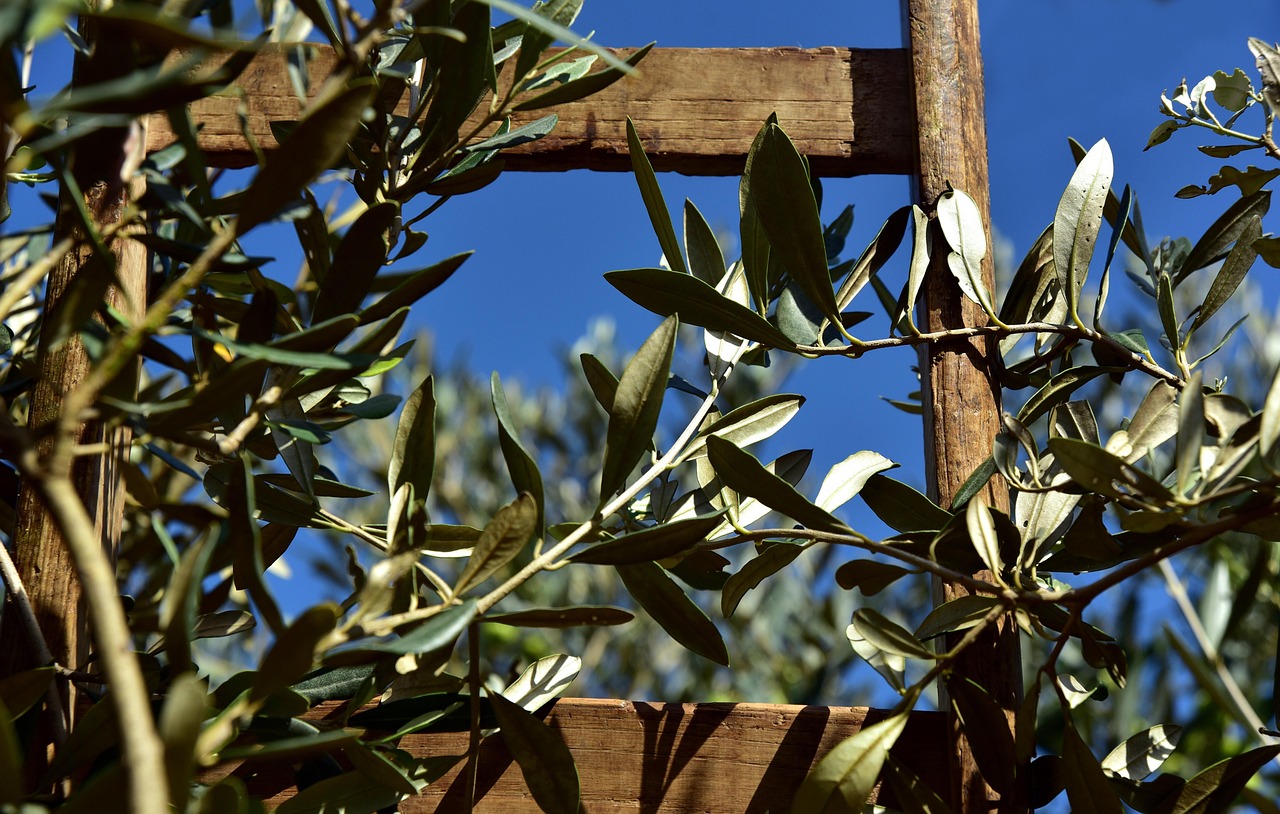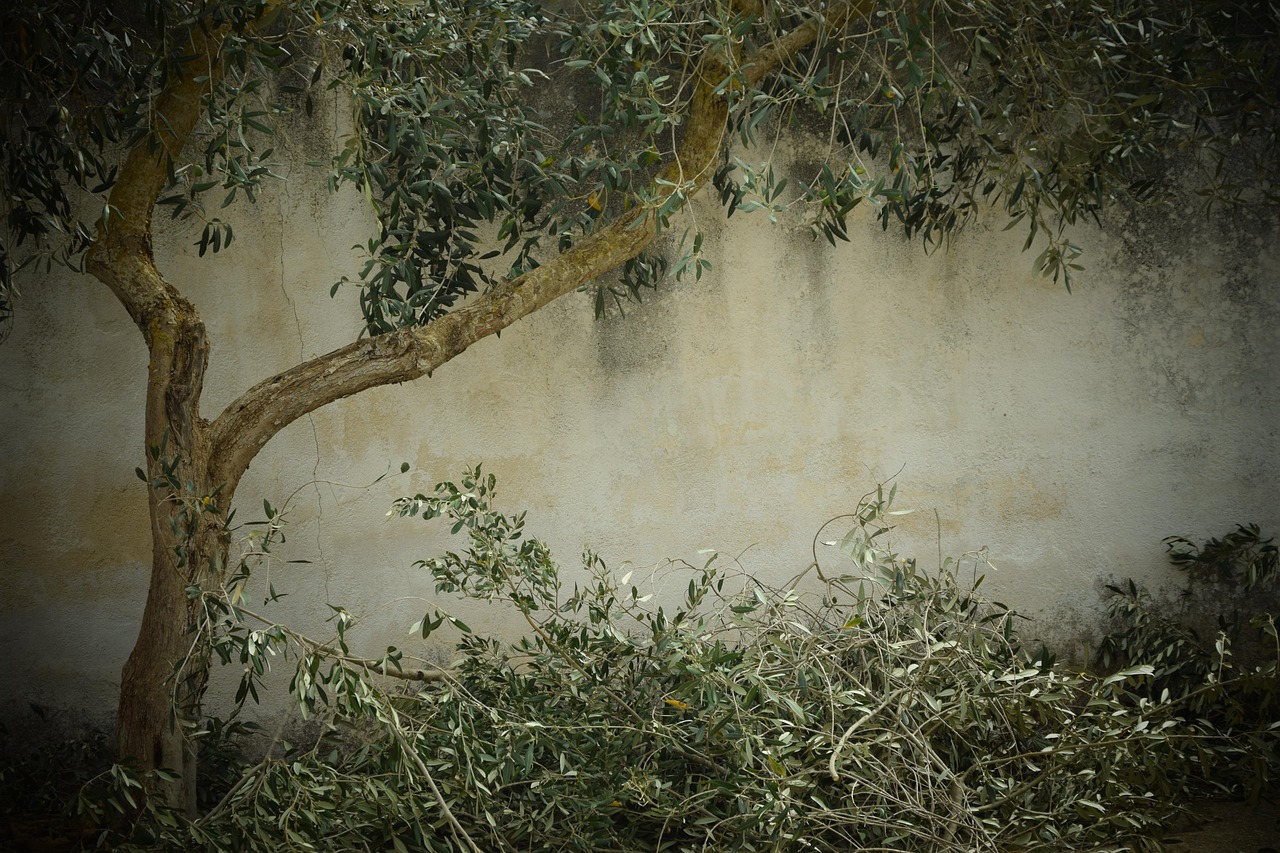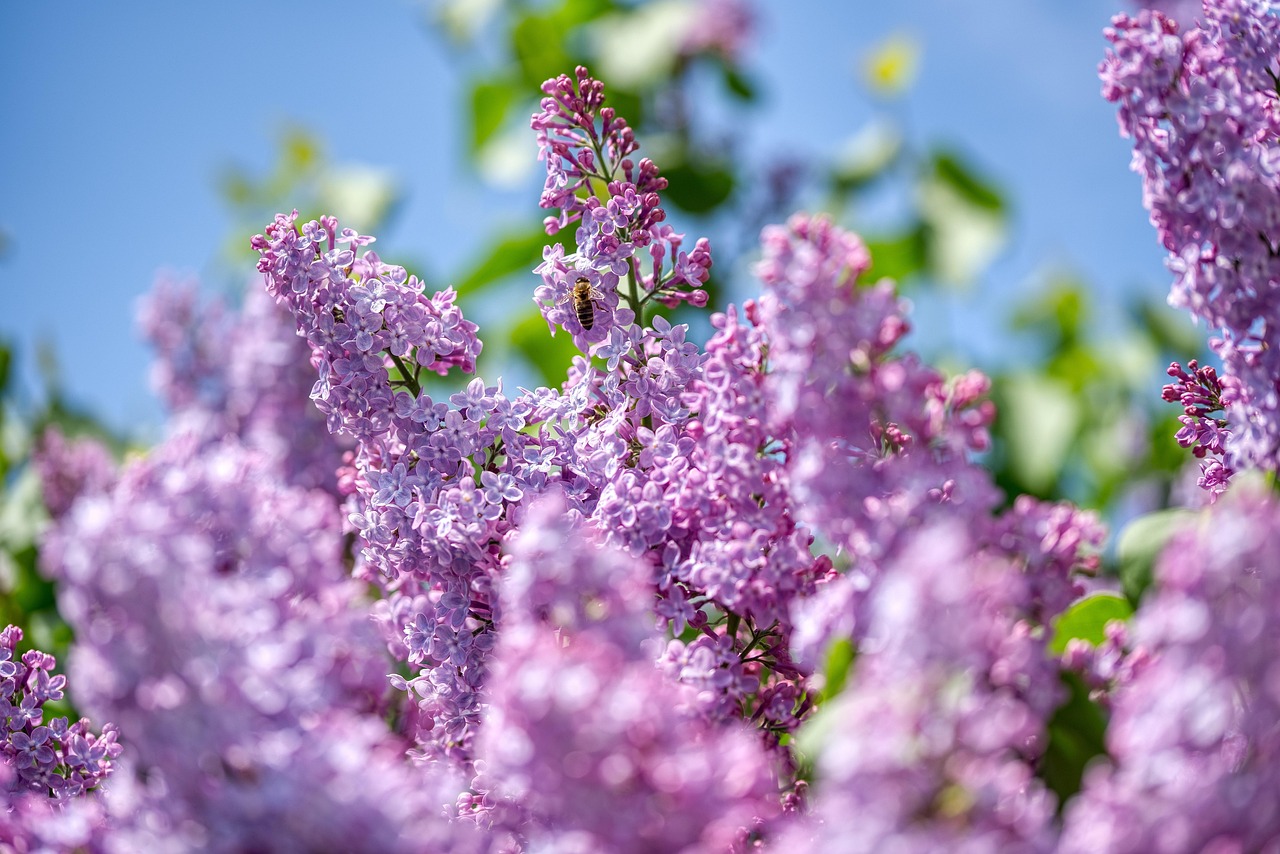Pruning indoor olive trees in apartment gardens involves selecting the right time, using proper tools, and following specific steps to encourage healthy growth. Regular pruning helps maintain shape, promotes air circulation, and prevents diseases.
Indoor olive trees (Olea europaea) are increasingly popular among apartment dwellers. They not only add a touch of greenery but also enhance indoor air quality. However, to ensure these trees thrive in a confined space, proper care is essential. One of the most important aspects of caring for an indoor olive tree is pruning.

Pruning is the process of trimming away dead or overgrown branches to encourage healthy growth. For olive trees, it helps maintain size, promotes fruit production, and keeps the tree looking aesthetically pleasing. Understanding when and how to prune your indoor olive tree can significantly impact its overall health.
Before delving into the specific steps of pruning, it is essential to understand some key characteristics of olive trees. They are hardy, drought-tolerant plants that thrive in bright light. However, the limited space of an apartment garden can pose challenges for their growth. Proper pruning is one way to mitigate these challenges.
Understanding Olive Tree Growth
Olive trees naturally grow wide and bushy. In an indoor environment, they may not have the same amount of space as outdoor trees. This makes it vital to control their shape through pruning. Here are some key points about olive tree growth:

- Olive trees can reach heights of up to 30 feet in nature.
- In pots, they typically grow between 3 to 6 feet tall.
- They prefer well-draining soil and bright indirect light.
- Pruning encourages new growth and fruiting.
Knowing when to prune your indoor olive tree is crucial. The best time for pruning is during the late winter or early spring before the growing season begins. This timing allows the tree to heal quickly and promotes vigorous growth as the weather warms up.
Essential Pruning Tools
Before starting the pruning process, gather the necessary tools. Having the right equipment will make your task easier and ensure clean cuts that promote healing. Here are some essential tools for pruning:
| Tool | Description |
|---|---|
| Pruning Shears | Used for cutting small branches up to ¾ inch thick. |
| Loppers | Ideal for thicker branches up to 2 inches thick. |
| Saw | Used for larger branches that require more force to cut. |
| Gloves | Protect your hands from cuts and sap. |
Once you have your tools ready, it’s time to start the pruning process. Begin by assessing the overall shape of your olive tree. Look for branches that are crossing each other or those that appear unhealthy.

Steps for Pruning Indoor Olive Trees
Follow these steps for effective pruning of your indoor olive tree:
- Inspect the Tree: Take a close look at your tree. Identify any dead, diseased, or damaged branches that need removal.
- Crown Thinning: Remove some of the interior branches to allow light and air to penetrate the center of the tree. This helps prevent disease.
- Sculpting: Shape the tree by trimming back any overgrown branches. Aim for a balanced appearance.
- Cut at an Angle: Make cuts at a 45-degree angle just above a leaf node. This helps prevent water from collecting on the cut surface.
- Keep it Minimal: Avoid removing more than one-third of the tree’s total foliage in a single pruning session.
After completing these steps, clean your tools with rubbing alcohol to prevent spreading any potential diseases between plants. Keeping your indoor olive tree well-pruned not only enhances its appearance but also supports its health and productivity.
Regular maintenance is vital. Consider checking your tree every few months to see if further pruning is necessary. With proper care, your indoor olive tree can flourish even in an apartment setting, providing beauty and possibly even olives as a reward for your efforts.

Post-Pruning Care for Indoor Olive Trees
After pruning your indoor olive tree, it is essential to provide proper care to promote healthy recovery and growth. The tree will need specific attention in the days and weeks following pruning to ensure that it thrives. Here are several important aspects of post-pruning care:
Watering Practices
Watering is a critical component of post-pruning care. Olive trees prefer to dry out between waterings, but after pruning, it is vital to monitor their water needs closely. Here are some tips:
- Check Soil Moisture: Use your finger to check the top inch of soil. If it feels dry, it’s time to water.
- Water Deeply: When watering, ensure that you provide enough water so that it reaches the root zone. This encourages deeper root growth.
- Avoid Overwatering: Be cautious not to overwater, as this can lead to root rot and other issues.
Fertilization After Pruning
Fertilizing your olive tree after pruning can help support new growth. However, timing and type of fertilizer are crucial for success.
- Wait a Few Weeks: Allow the tree some time to recover from pruning before applying fertilizer. A wait of about two to four weeks is recommended.
- Choose the Right Fertilizer: Use a balanced, slow-release fertilizer with an equal ratio of nitrogen, phosphorus, and potassium.
- Follow Instructions: Always follow the manufacturer’s instructions for application rates to avoid over-fertilization.
Common Issues Following Pruning
Even with proper care, indoor olive trees may face several challenges post-pruning. It is essential to be aware of potential issues and how to address them:
| Issue | Symptoms | Solution |
|---|---|---|
| Wilting Leaves | Leaves appear droopy and lack firmness. | Check for underwatering or overwatering and adjust watering schedule accordingly. |
| Pest Infestation | Visible insects or webbing on leaves. | Inspect regularly and treat with insecticidal soap if necessary. |
| Yellowing Leaves | Leaves turn yellow and may drop off. | This could indicate overwatering or nutrient deficiency; evaluate care routine. |
| Disease | Mold or dark spots on leaves. | Improve air circulation and avoid overhead watering. Remove affected leaves promptly. |
Pruning Techniques for Different Growth Stages
Different stages of growth require different pruning techniques. Understanding these can help you maintain your indoor olive tree effectively:
Young Olive Trees
When your olive tree is young, focus on training its structure. Here are some key techniques:
- Initial Shaping: As the tree grows, prune to create a strong central leader and remove any competing branches.
- Encouraging Branch Development: Trim back tips of branches to encourage bushier growth.
Mature Olive Trees
Mature trees require maintenance pruning to keep their shape and health. Consider these techniques:
- Thinning Out: Remove older branches that have become overcrowded to allow light penetration.
- Renewal Pruning: Cut back older wood to encourage the growth of new shoots that will produce fruit.
The Role of Light in Recovery
Light plays a significant role in the recovery process after pruning. Olive trees thrive in bright environments, and proper light exposure is essential for new growth.
- Avoid Direct Sunlight: After pruning, avoid placing the tree in direct harsh sunlight immediately, as this can stress the plant.
- Gradual Light Exposure: Gradually reintroduce it to brighter light conditions over time for optimal recovery.
- If Possible, Rotate the Tree: This helps ensure even light exposure on all sides, promoting balanced growth.
By paying close attention to watering, fertilization, and environmental conditions, you can help your indoor olive tree thrive following a pruning session. Regular monitoring will ensure that your tree remains healthy and vibrant in your apartment garden.
Common Mistakes to Avoid When Pruning Indoor Olive Trees
Pruning indoor olive trees can be a rewarding experience, but it is essential to approach the task with care. There are common mistakes that many gardeners make, which can hinder the health and growth of the tree. Here are some pitfalls to avoid:
Over-Pruning
One of the most significant mistakes is over-pruning. Taking off too much foliage can stress the tree and reduce its ability to photosynthesize effectively. Here are some guidelines:
- Limit Removal: Avoid removing more than one-third of the tree’s foliage at once.
- Evaluate Growth: Assess the tree’s shape and health before making cuts.
- Prune for Health: Focus on removing dead or diseased branches, rather than shaping excessively.
Poor Tool Maintenance
Using dirty or dull tools can lead to jagged cuts and increase the risk of disease. It is crucial to maintain your tools effectively. Consider these tips:
- Clean Tools: Wipe tools with rubbing alcohol before and after use to prevent the spread of pathogens.
- Sharpen Blades: Ensure that your pruning shears and loppers are sharp for clean cuts.
Ineffective Timing
Choosing the wrong time to prune can lead to poor outcomes. Understanding the growth cycles of your olive tree is essential. Here’s what to consider:
- Seasonal Awareness: Prune in late winter or early spring before new growth begins.
- Avoid Fall Pruning: Pruning too close to winter can expose the tree to stress from cold temperatures.
Signs Your Indoor Olive Tree Needs Pruning
Recognizing when your indoor olive tree needs pruning is essential for maintaining its health and aesthetic appeal. Here are common signs that indicate it’s time to prune:
Excessive Growth
If your olive tree is growing too tall or wide for its space, it may be time to prune. Look for:
- Overgrown Branches: Branches that extend beyond the desired shape.
- Crowded Canopy: An overly dense upper section that prevents light from reaching lower leaves.
Dead or Diseased Branches
Regular inspection is essential to spot any dead or diseased branches. Watch for:
- Brittle Branches: Branches that snap easily or show no signs of life.
- Discoloration: Leaves or branches that appear brown or black may indicate disease.
Advanced Pruning Techniques for Experienced Gardeners
For those who have mastered basic pruning, advanced techniques can help improve the structure and productivity of indoor olive trees. Here are a few advanced methods:
Crown Reduction
Crown reduction involves selectively removing branches from the top of the tree to reduce its height while maintaining its overall shape. This technique encourages better light penetration and air circulation.
- Selective Cutting: Choose branches that are taller than desired and cut back to a lateral branch.
- Aim for Balance: Maintain an even appearance by distributing cuts around the crown.
Espalier Techniques
Espalier is a method where trees are trained to grow flat against a wall or trellis. This technique is suitable for limited spaces. The steps include:
- Choose a Framework: Decide on a trellis or wall where the tree will grow.
- Train Branches: Tie young branches horizontally as they grow, removing unwanted vertical growth.
- Regular Maintenance: Continue pruning to maintain shape and encourage fruit production.
Understanding Olive Tree Varieties and Their Pruning Needs
Different varieties of olive trees can have unique growth habits and pruning requirements. Understanding these differences can enhance your pruning strategy.
| Variety | Description | Pruning Needs |
|---|---|---|
| Arbequina | A small, bushy tree known for its high oil content. | Light pruning to maintain shape; focus on thinning out dense areas. |
| Kalamata | A larger variety with dark purple fruit, often grown for eating. | More extensive pruning may be needed; remove older wood for new growth. |
| Picholine | A medium-sized tree with a strong upright growth habit. | Regular maintenance pruning; encourage an open center for light access. |
| Mission | A versatile variety that adapts well to different conditions. | Prune to control size; remove weak branches and promote healthy growth. |
By understanding the specific needs of your indoor olive tree variety, you can tailor your pruning practices to enhance growth and productivity effectively. Each variety has its own characteristics, which can influence how you approach pruning throughout the year.
Enhancing Indoor Olive Tree Health Through Environmental Factors
In addition to pruning, several environmental factors play a crucial role in the overall health and vitality of indoor olive trees. Understanding these factors can help you create the ideal environment for your trees to thrive.
Temperature Requirements
Olive trees prefer moderate temperatures and can be sensitive to extremes. Here are some temperature guidelines:
- Optimal Range: Maintain indoor temperatures between 65°F and 75°F (18°C to 24°C).
- Avoid Cold Drafts: Keep trees away from windows and doors where cold drafts can occur during winter months.
- Heat Sources: Avoid placing trees near heaters or radiators, which can dry out the air and stress the plant.
Humidity Levels
Olive trees thrive in moderate humidity levels. Here are some tips to achieve the right humidity:
- Monitor Humidity: Use a hygrometer to check indoor humidity levels. Aim for a range of 40% to 60% for optimal growth.
- Increase Humidity: If necessary, use a humidifier or place a tray of water near the tree to boost humidity levels.
- Avoid Overly Dry Air: In winter, indoor heating can lower humidity. Regular misting of leaves can help combat this.
Soil Quality and Composition
The type of soil used for your indoor olive tree can significantly impact its health. Consider these aspects when selecting soil:
- Well-Draining Soil: Use a soil mix designed for cacti or succulents, as these will provide excellent drainage.
- Organic Matter: Incorporate organic matter such as compost to improve soil quality and nutrient availability.
- Soil pH: Olive trees prefer slightly alkaline soil, with a pH range of 7.0 to 8.5. Test soil pH periodically.
Pest Management Strategies
Pests can pose a significant threat to indoor olive trees. Being proactive in pest management can help prevent infestations. Here are some strategies:
Regular Inspections
Regularly inspect your olive tree for signs of pests. Look for:
- Visible Insects: Check for small bugs on leaves and stems.
- Sticky Residue: Honeydew from pests like aphids can indicate an infestation.
- Webbing: Spider mites can leave webbing on branches and leaves, indicating their presence.
Natural Remedies
If you notice pests, consider using natural remedies first before resorting to chemical treatments:
- Insecticidal Soap: Spray affected areas with insecticidal soap to eliminate soft-bodied insects.
- Neem Oil: This natural oil can deter pests while being safe for the plant and environment.
- Sugar and Water Solution: A mixture of sugar and water can attract beneficial insects that prey on pests.
Final Thoughts
Caring for indoor olive trees involves understanding their specific needs, especially when it comes to pruning, watering, light exposure, and pest management. By implementing proper pruning techniques, providing a suitable environment, and being proactive in addressing potential issues, you can ensure your indoor olive tree remains healthy and vibrant.
The journey of growing indoor olive trees is rewarding, offering both aesthetic appeal and potential harvests of olives. Whether you are an experienced gardener or just starting with indoor plants, these guidelines will help you cultivate a thriving indoor olive garden in your apartment.
Remember that patience is key. Olive trees may take time to respond to care practices, but with consistent attention and appropriate techniques, your efforts will yield beautiful results. Enjoy the process of nurturing your olive tree as it grows alongside you in your home.
